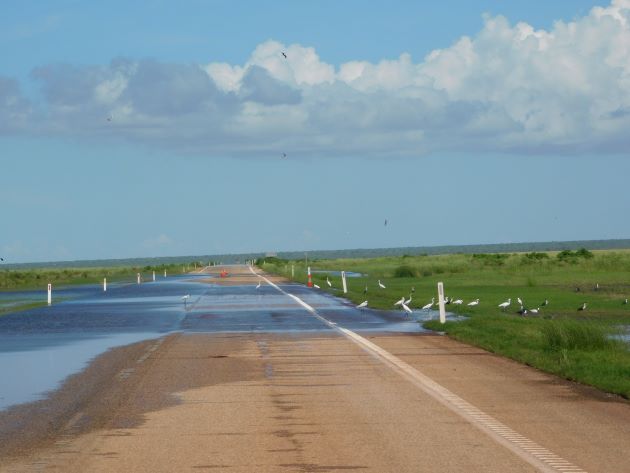
We have continued to observe the birds along the edge and on the Great Northern Highway to the south of Broome across Roebuck Plains. The depth of water over the highway varies daily and the bird-life varies too. Many parts of the north of Australia are still inaccessible due to flooding and the best place to check is the Main Roads website before going for a drive. There is not a lot of traffic at any time, so you are able to pull to the edge of the bitumen and stop to watch the birds. Don’t leave the bitumen or you may well get seriously bogged!
There have been more Great Egrets, Intermediate Egrets and Little Egrets arriving and also more Pied Herons, which have numbered up to 24 recently. There are also White-faced Herons, but surprisingly we have yet to observe a White-necked Heron there this year. The middle of the section of highway that runs through Roebuck Plains has been the deepest section of water recently and where the birds like to feed on or beside the highway as above and below.
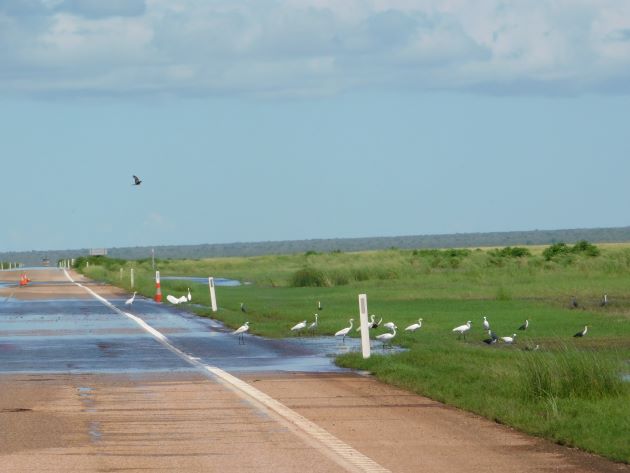
Birds feeding on and near the highway
Last Sunday we were parked in the water on the edge of the highway looking at all of the birds when Grant noticed that there was an odd bird. The bird was just over some long grass just beyond the edge of the highway and it was amongst Little Egrets. This individual was the same size as a Little Egret and had the same features, but it was not white.
I was able to just see the odd individual bird by standing on the side steps of our four-wheel drive. I attempted several photos, but due to the height of the highway above the flooded landscape it was rather tricky. In the end I balanced in the vehicle standing right on the edge and I could just capture the odd plumage. Instead of being a white Little Egret it was mostly grey. We believe that this bird may be showing melanistic tendencies.
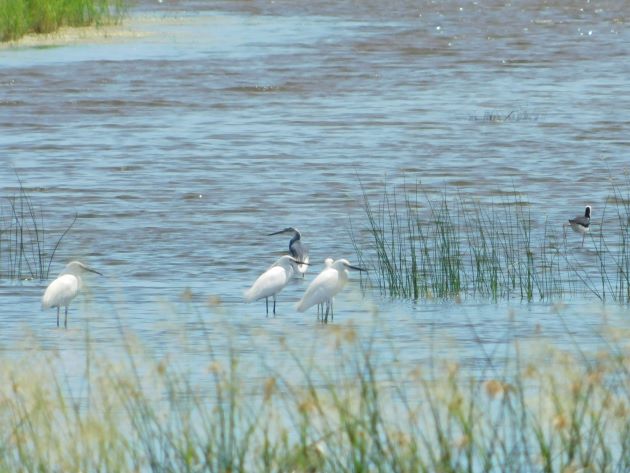
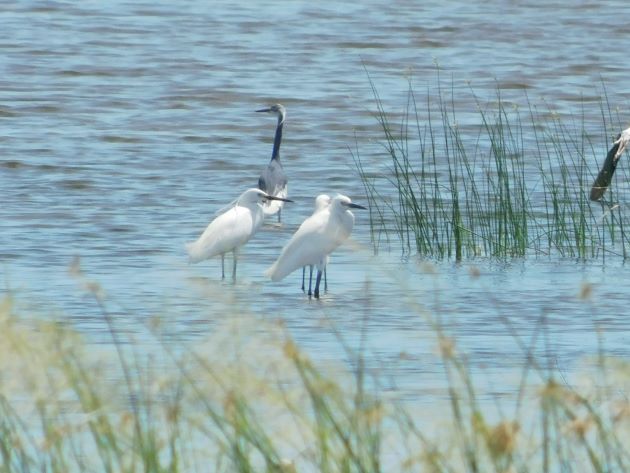
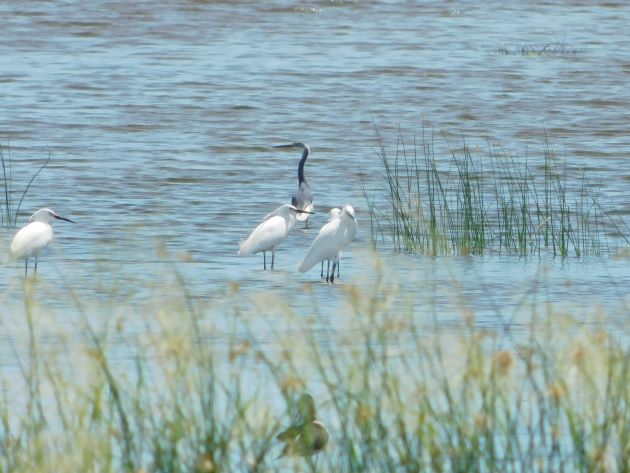
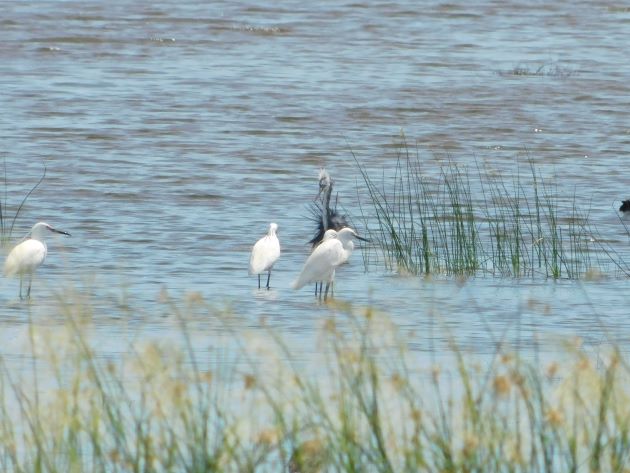
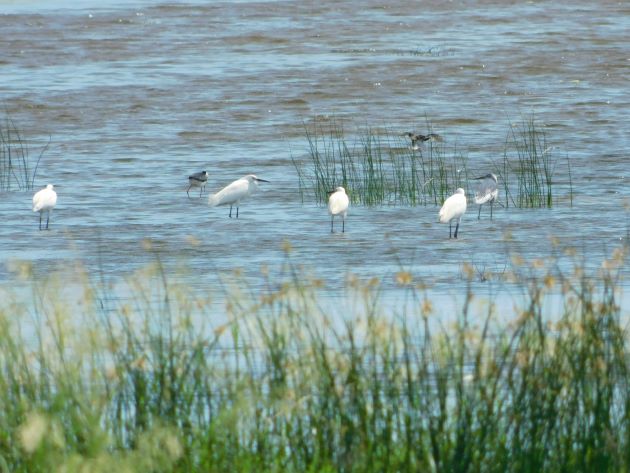
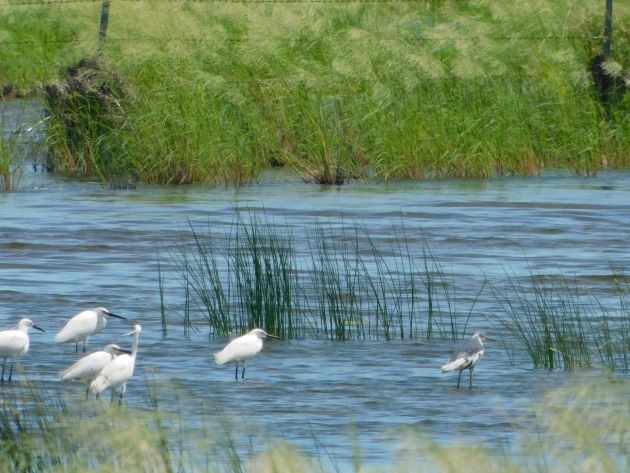
Little Egret with abnormal plumage
This is our first encounter of a Little Egret with abnormal plumage, so despite the small issue of the grass being tall or myself being not as tall as I would have liked on this occasion the photos above are the best that I could manage. I thought I would rather document something rather than nothing on this occasion and if we get a chance to get better photographs then I will.
Previously we have encountered birds that have been white when they should have been dark. This includes a white Red Knot in 2011 and a Greater Sand Plover with abnormal plumage between 2016 and 2018.













Leave a Comment